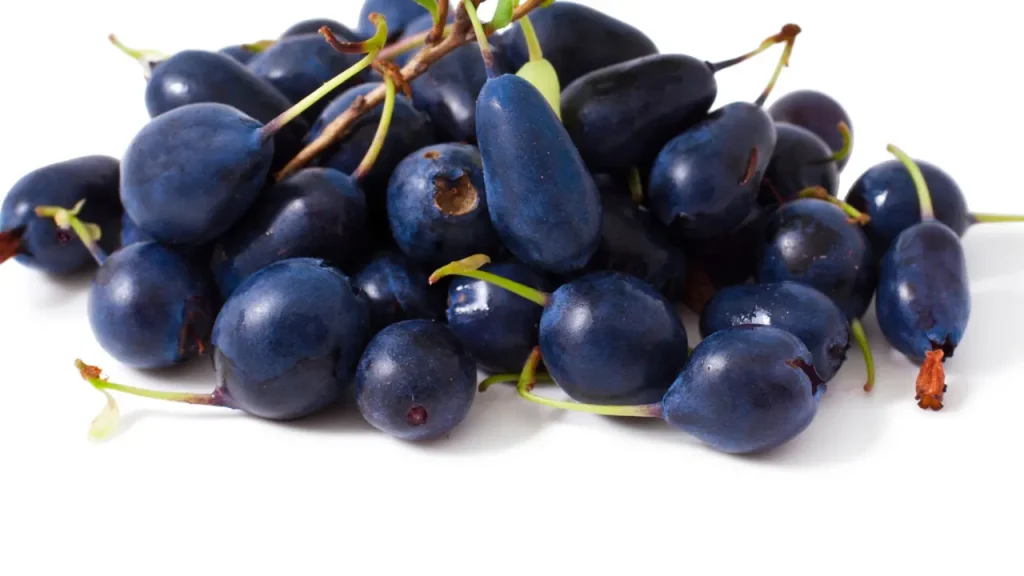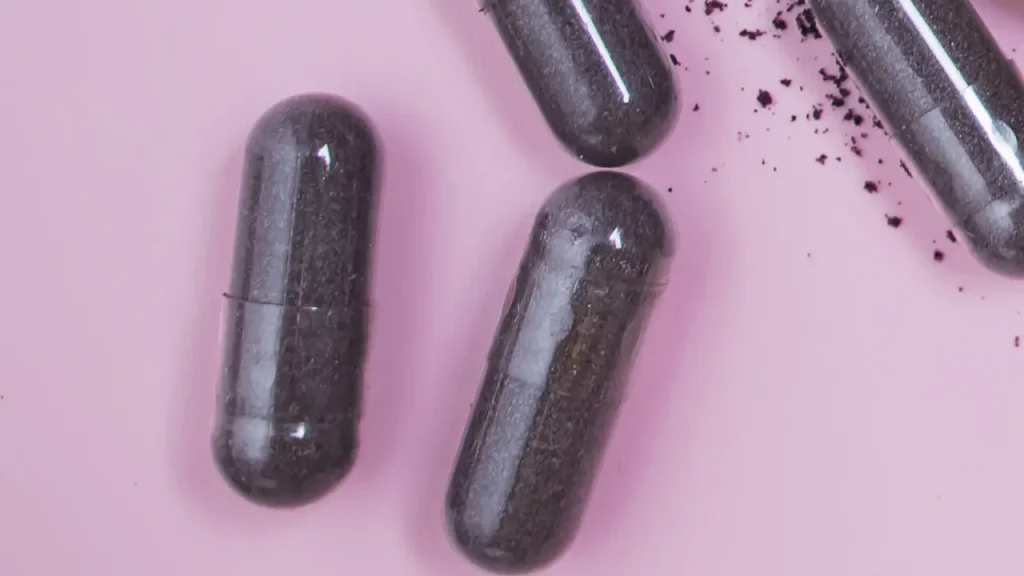Bog bilberry, scientific name Vaccinium uliginosum, is a deciduous shrub endemic to the temperate and subarctic regions of the Northern Hemisphere. It has many of the same chemical components and health-enhancing qualities as the ordinary bilberry (Vaccinium myrtillus), with which it is closely related. This page seeks to clarify the chemistry of bog bilberry, as well as the nutritional supplement’s advantages for health, recommended dosage, negative effects, and possible drug interactions.
You May Also Like:
The Best Supplements for Brain Injury: 5 Top Brands Reviewed
Keep Your Brain Young With the 5 Most Powerful Nootropic Supplements
Bog Bilberry: Benefits, Dosage, Side Effects, Drug Interactions, and Other Important Information is an original (NootropicsPlanet) article.
Nature of Bog Bilberry
A little deciduous plant known as bog bilberry (Vaccinium uliginosum) is generally found in moist, acidic environments like peat bogs, swamps, and damp woodlands. The plant has a distinctive creeping and branching growth pattern and can reach a height of 30 to 70 cm. Small, bell-shaped, often white or pinkish flowers are produced by this plant, and these flowers give place to small, rounded, blue-black fruits. Bog bilberry leaves are simple, alternating, oval-shaped, and have a serrated border.
The shallow root structure of the bog bilberry plant permits it to survive in nutrient-poor, waterlogged soils, allowing it to be well adapted to its natural environment. The plant has also developed a number of coping mechanisms to deal with the low levels of nutrients in its environment, including mycorrhizal relationships with fungi and the use of its high phenolic chemical content as a [“defense”] against herbivores and diseases.
Indigenous people in Northern Europe, Asia, and North America have long consumed bog bilberry fruits both fresh and in various processed forms, such as jams, juices, and alcoholic beverages. Bog bilberries are now predominantly prized for their powerful bioactive chemicals and related health advantages, which have increased their appeal as dietary supplements.
Health Benefits of Bog Bilberry
- Cardiovascular Health: Consuming bog bilberries has been linked to enhanced cardiovascular health, primarily due to its anti-inflammatory and anti-oxidant properties. Bog bilberries contain anthocyanins and other phenolic compounds that have been demonstrated to inhibit the oxidation of LDL cholesterol, hence lowering the risk of atherosclerosis. Additionally, by encouraging vasodilation and enhancing endothelial function, these substances assist in controlling blood pressure.
- Bog bilberry has long been known to have potential advantages for eye health. By defending retinal cells against oxidative stress and inflammation, the high anthocyanin concentration may lower the incidence of age-related macular degeneration (AMD) and cataracts. It has also been demonstrated that anthocyanins improve night vision by accelerating the regeneration of the retinal pigment rhodopsin, which is sensitive to light.
- Cognitive performance: Bog bilberries’ anti-inflammatory and antioxidant characteristics may also help to boost cognitive performance. According to research, eating foods high in anthocyanins can lower your risk of developing neurodegenerative disorders like Alzheimer’s and Parkinson’s as well as age-related cognitive decline. Anthocyanins and other phenolic compounds have the capacity to penetrate the blood-brain barrier, where they can have neuroprotective effects by lowering oxidative stress and neuroinflammation.
- Diabetes control: Bog bilberry has the potential to help with diabetes by increasing insulin sensitivity and glucose metabolism. Bog bilberry contains anthocyanins and other phenolic compounds that can influence how well glucose is absorbed and utilized, as well as decrease the activity of enzymes such as glucosidase and amylase. These systems can aid in controlling blood sugar levels and preventing diabetes-related problems.

Chemistry of Bog Bilberry
Bog bilberry is abundant in a variety of bioactive substances, which contribute to its special health advantages. Anthocyanins, flavonols, phenolic acids, tannins, and other phenolic compounds are some of the more prominent components. Anthocyanins, which are water-soluble pigments and the main bioactive elements among them, are in charge of giving the fruit its blue [“color”]. Bog bilberries include cyanidin, delphinidin, malvidin, and peonidin glycosides as their main anthocyanins.
Bog bilberry also contains flavonols such as quercetin, kaempferol, and myricetin glycosides. These substances have strong anti-inflammatory and antioxidant effects. The ability of the plant to act as an antioxidant is facilitated by phenolic acids, such as chlorogenic, p-coumaric, and ferulic acids. Another class of polyphenolic substances present in bog bilberries is the tannins, which have astringent and anti-inflammatory characteristics. Proanthocyanidins and ellagitannins are two examples of tannins.
Physiological Mechanisms of Action of Bog Bilberry
Bog bilberry has a strong antioxidant capacity that can be primarily attributable to the presence of anthocyanins and other phenolic chemicals. These substances function as scavengers of free radicals, lowering oxidative stress and preventing cellular damage. Bog bilberry’s antioxidant capacity has been associated with a number of methods, including the direct scavenging of reactive oxygen species (ROS), chelation of transition metal ions, and modification of antioxidant enzyme activity.
Bog bilberry also has anti-inflammatory qualities, which its flavonol and phenolic acid concentration is responsible for. Inflammation is decreased by these substances because they regulate the expression of pro-inflammatory cytokines and enzymes such as [“tumor”] necrosis factor-alpha (TNF-), interleukin-6 (IL-6), and cyclooxygenase-2 (COX-2).


Optimal Dosage of Bog Bilberry
Based on variables including age, gender, and medical conditions, the ideal dosage of bog bilberry supplements may change. Although there isn’t a set dosage for adults, it’s typically advised to take 100–300 mg of standardized bog bilberry extract, which contains 25% anthocyanins, once or twice a day. Before beginning bog bilberry supplementation, it is crucial to read the manufacturer’s directions and speak with a doctor.
Side Effects and Safety Considerations of the Use of Bog Bilberry
When included in a balanced diet and consumed in moderation, bog bilberry is generally regarded as harmless. However, taking too many bog bilberry supplements can make you feel sick, have [“diarrhea”], and have an upset stomach. Bog bilberry can potentially cause an allergic reaction, especially in people who are already known to be allergic to other Ericaceae family plants.
Potential Substance Interactions with Bog Bilberry
Bog bilberry may interact with specific drugs and substances, so it’s important to speak with a doctor before using it as a supplement, especially if you’re already taking prescription drugs. Among the possible interactions are:
- Anticoagulant and Antiplatelet Drugs: Warfarin, aspirin, and clopidogrel, among others, can intensify the effects of bog bilberry, which increases the risk of bleeding.
- Bog bilberry may interact with antidiabetic drugs such as metformin, sulfonylureas, and thiazolidinediones because it can affect insulin sensitivity and glucose metabolism. To prevent hypoglycemia, monitoring, and dosage modifications may be necessary when using these drugs plus bog bilberry supplements simultaneously.
- Antihypertensive Drugs: Angiotensin-converting enzyme (ACE) inhibitors, calcium channel blockers, and beta-blockers may all work better when combined with the vasodilatory effects of bog bilberry. In such circumstances, blood pressure monitoring and medication modifications may be required.


Best Responsible Uses of Bog Bilberry Supplements
Individuals should take into account numerous aspects, such as quality, dosage, potential interactions, and sustainability, to ensure the best responsible usage of bog bilberry supplements.
- Quality: Choosing a high-quality supplement from a respected source is crucial. Seek out extracts that have been standardized and include a certain amount of anthocyanins and other bioactive substances. Additional assurance of a product’s safety and effectiveness can be obtained by third-party testing and certification for quality and purity.
- Dosage: Follow the dosing instructions given by the manufacturer or a medical expert. Bog bilberry supplements can have negative side effects if used in excess. A daily dose of 100–300 mg of standardized bog bilberry extract, which contains 25% anthocyanins, is widely regarded as safe and beneficial for the majority of individuals.
- Speak with a healthcare practitioner: Before beginning bog bilberry supplementation, always speak with a healthcare practitioner, especially if you are taking prescription medication or have a history of medical issues. An expert in medicine can offer individualized guidance on the right dosage and any possible interactions with drugs or other supplements.
- Watch for side effects: Be alert of any possible negative effects and stop using the medication immediately. Abuse of bog bilberry supplements is frequently accompanied by gastrointestinal pain, such as nausea, [“diarrhea”], and indigestion. Additionally, allergic reactions are likely, especially in people who are known to be allergic to plants of the Ericaceae family.
- Sustainability: To ensure responsible use, pick supplements made from bog bilberry plants that have been sustainably and ethically harvested. Over-harvesting may lead to habitat degradation and plant species endangerment. Look for items that have received certification from groups that support ethical harvesting methods, such as FairWild or Rainforest Alliance.
Bog Bilberry:
Conclusion
Bog bilberry is a type of plant found in moist, acidic environments. Recently, bog bilberry has emerged as a supplement that is praised for its antioxidant content, including anthocyanins and other phenolic compounds. Due to its antioxidant content, it can bring wellness to cardiovascular health, eye health, cognitive ability, and blood sugar levels. This supplement is generally harmless, however, people who react badly to other Ericaceae plants should be more aware of when taking this supplement. Bog bilberry may react with other medications such as anticoagulant, antiplatelet, antidiabetic, and antihypertensive drugs due to its metabolic ability. You need to know the optimal dosage for human consumption and combination by seeking advice from your doctors.


References:
- Vaccinium Uliginosum And Vaccinium Myrtillus-Two Species-One Used as Functional Food. Retrieved from:https://pubmed.ncbi.nlm.nih.gov/37836403/#:~:text=Because%20of%20their%20antioxidant%2C%20anti,a%20component%20of%20sunscreen%20preparations.
- Bog Bilberry (Vaccinium Uliginosum L.) Extract Reduces Cultured Hep-G2, Caco-2, and 3T3-L1 Cell Viability, Affects Cell Cycle Progression, And Has Variable Effects on Membrane Permeability. Retrieved from:https://pubmed.ncbi.nlm.nih.gov/20492295/
- Bog Bilberry Phenolics, Antioxidant Capacity, and Nutrient Profile. Retrieved from:https://pubmed.ncbi.nlm.nih.gov/26868586/
Important Note: The information contained in this article is for general informational purposes only, and should not be construed as health or medical advice, nor is it intended to diagnose, prevent, treat, or cure any disease or health condition. Before embarking on any diet, fitness regimen, or program of nutritional supplementation, it is advisable to consult your healthcare professional in order to determine its safety and probable efficacy in terms of your individual state of health.
Regarding Nutritional Supplements Or Other Non-Prescription Health Products: If any nutritional supplements or other non-prescription health products are mentioned in the foregoing article, any claims or statements made about them have not been evaluated by the U.S. Food and Drug Administration, and such nutritional supplements or other health products are not intended to diagnose, treat, cure, or prevent any disease.
